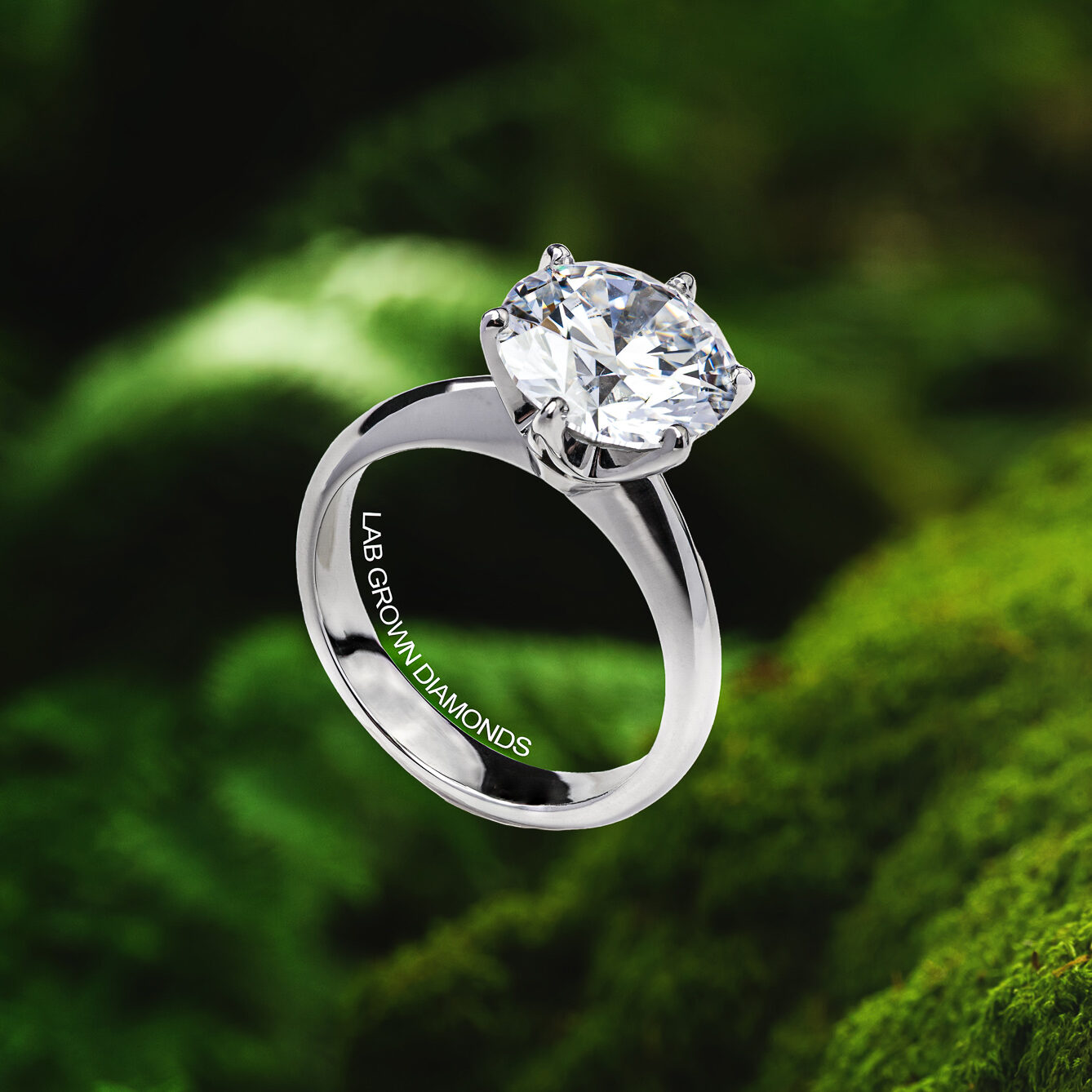Understanding the Diamond Cut: A Key Element of Lab Grown Diamonds
When shopping for lab grown diamonds, one of the most important aspects to consider is the cut of the diamond. The term “diamond cut” refers not to the shape of the diamond but to how well the diamond has been crafted and shaped from its rough form. The cut of a diamond plays a significant role in its overall appearance, sparkle, and brilliance. While people often focus on the color and carat weight of a diamond, the cut is arguably the most important factor when determining a diamond’s beauty, especially for lab diamonds.
A well-cut diamond, what does diamond cut mean, will maximize the stone’s natural brilliance, enhancing its fire and sparkle. Understanding what diamond cut means can help you make a more informed decision when purchasing lab diamonds, ensuring that you get the best value for your investment.
How Diamond Cut Affects Lab Grown Diamonds
In the context of lab diamonds, the cut refers to how well the diamond has been shaped and faceted by skilled craftsmen. A diamond’s cut quality affects how light enters and exits the stone, directly influencing its sparkle. Lab grown diamonds are created in a lab using advanced technology that mimics the natural diamond-growing process, but the cut of the diamond is still an essential aspect that determines its overall brilliance.
A diamond that is cut to precise proportions will allow light to travel through it and reflect off its facets, creating a mesmerizing effect. On the other hand, a poorly cut diamond will result in light leakage, reducing the diamond’s sparkle. The cut of a lab diamond can dramatically enhance or diminish its beauty, making it one of the most important factors to consider when selecting your perfect diamond.
The Four Cs and the Role of Diamond Cut in Lab Grown Diamonds
When grading diamonds, experts rely on the Four Cs: Cut, Color, Clarity, and Carat weight. While all four elements contribute to a diamond’s overall quality, the cut is the most important factor affecting its visual appeal. The cut influences how the diamond performs in terms of brilliance, fire, and scintillation. For lab grown diamonds, the cut is graded on a scale from Excellent to Poor, similar to natural diamonds.
The cut grade of a lab diamond takes into account factors such as the symmetry, proportions, and polish of the stone. A diamond with excellent proportions, symmetry, and polish will reflect light in the most optimal way, making the stone appear dazzling and vibrant. Conversely, diamonds with poor proportions or symmetry may not show the brilliance that lab diamonds are known for.
The Different Diamond Cut Styles for Lab Grown Diamonds
When it comes to lab grown diamonds, there are several cut styles to choose from, each offering a unique look and appeal. The most popular cuts for lab diamonds include the round brilliant cut, the princess cut, the emerald cut, the oval cut, and the cushion cut, among others. Each cut has its unique characteristics, and the choice of cut is often a matter of personal preference.
For example, the round brilliant cut is the most popular cut for diamonds, including lab grown diamonds, due to its ability to maximize light reflection and create the most brilliance. The princess cut, with its sharp edges and geometric shape, also offers incredible sparkle but with a more contemporary appeal. The emerald cut, which has a step-cut design, is often chosen for its elegant and sophisticated appearance, though it doesn’t produce as much sparkle as the round cut.
Choosing the right cut for your lab grown diamond depends on your personal style and what you are looking for in terms of brilliance, shape, and overall appearance.
Why Diamond Cut Matters for Lab Grown Diamonds
The cut of a diamond is a key factor because it determines how effectively the diamond interacts with light. A well-cut lab diamond will display the maximum brilliance and sparkle, creating a striking visual impact. Light enters the diamond, reflects off the facets, and returns to the eye in a way that makes the stone appear vibrant and full of life. A poor cut, however, results in less sparkle and can make the diamond appear dull or lifeless, even if the diamond has high clarity and color ratings.
When considering lab grown diamonds, the cut should be a top priority because it has a significant influence on the overall visual performance of the stone. Even if a lab diamond has excellent color and clarity, a poor cut can cause it to lose much of its potential beauty.
How to Choose the Best Diamond Cut for Your Lab Grown Diamond
Choosing the best diamond cut for your lab grown diamond is a personal decision, but there are several factors to keep in mind. First, consider your personal style and the type of jewelry you plan to set the diamond in. For example, if you’re choosing a diamond for an engagement ring, the round brilliant cut is a timeless and classic choice that will never go out of style. However, if you prefer a more unique or contemporary look, cuts like the oval, cushion, or princess may be a better fit.
Second, consider the diamond’s proportions and symmetry. A diamond with excellent proportions and symmetry will create more brilliance, making it sparkle and shine. Make sure to inspect the cut grade when reviewing lab diamonds; an Excellent or Ideal grade will provide the highest level of brilliance.
Finally, keep in mind that while the cut is the most important factor in determining the visual appeal of a lab grown diamond, other factors like color, clarity, and carat weight will also play a role in your decision-making process. It’s important to strike a balance between all the characteristics that matter most to you.
The Difference Between Lab Grown and Mined Diamond Cut Quality
While the cut is an essential aspect of both lab grown diamonds and mined diamonds, there are a few key differences between the two. Lab grown diamonds are created in a controlled environment, which allows for greater precision and control over the diamond’s cut. As a result, lab grown diamonds are often cut with greater accuracy than many natural diamonds, which can have minor imperfections due to the unpredictable nature of mining.
Additionally, because lab grown diamonds are typically produced with higher precision, they tend to offer more consistent cut quality. This means that consumers often find lab grown diamonds to be a more reliable choice when it comes to cut quality, ensuring that the stone will display its full brilliance and fire.
Conclusion: The Importance of Diamond Cut in Lab Grown Diamonds
In conclusion, the cut of a lab grown diamond is a crucial factor in determining its overall beauty, brilliance, and value. The way a diamond is cut directly affects how light interacts with it, which ultimately influences how much it sparkles and shines. When choosing a lab grown diamond, prioritize the cut to ensure that you get a diamond that is not only beautiful but also maximizes its natural brilliance. Whether you’re purchasing a round brilliant cut, a princess cut, or any other style, the cut of your lab grown diamond will play a significant role in how stunning it looks in your chosen piece of jewelry.




